For better or for worse, campaign financing plays a huge role in today’s elections. Although money is only one of many factors in determining who wins any particular election, it’s important to consider who contributes how much to whom.
As this Saturday’s Nevada caucuses approach – with South Carolina just a few days behind, the Democratic field is nearing a shake-out. Candidates with money in the bank are likely to stick around. Those who are broke will probably depart
So far in this election cycle, resources have proven vital to Bernie Sanders. He was able to mobilize his supporters in the first two voting states more than any other candidate, and this helped him finish on top in the Iowa caucuses and the New Hampshire primary.
The most direct consequences of these two contests results are that Joe Biden will have a hard time raising more funds and Elizabeth Warren has lost virtually any purchase she had on winning.
On Super Tuesday, March 3, when many of the biggest states including Texas and California vote, we will have a better idea who’s the likely winner. And after Florida votes on March 17 and the Milwaukee convention July 13 to 16, the race will finally be decided.
So far, though, the race for dollars has proven interesting — the following graphics show just how interesting — and provides an idea of where this financial donnybrook may end.
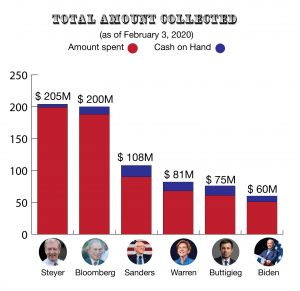
In this graph we can clearly see that the billionaires involved, Michael Bloomberg and Tom Steyer, have laid out far more than their opponents. Bernie Sanders is third, but far behind. Though he shows more cash on hand, his dependence on contributors rather than his own bank account could hobble him after South Carolina’s voting is done. Sanders holds a decent lead over Elizabeth Warren, who’s ahead of Pete Buttigieg, leaving Joe Biden in last place with less than half of what the top spender has laid out.
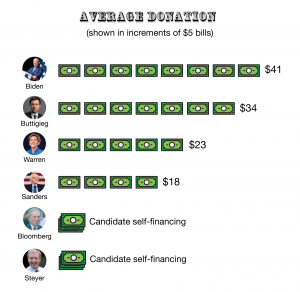
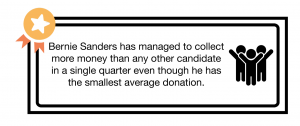
Things become more interesting when we look at the average donation for each candidate. Sanders shows the smallest average, $18, while Biden has clearly attracted wealthier supporters who gave him more than double that, $41. Donald Trump, who is already working hard in his reelection has an average donation of $34.
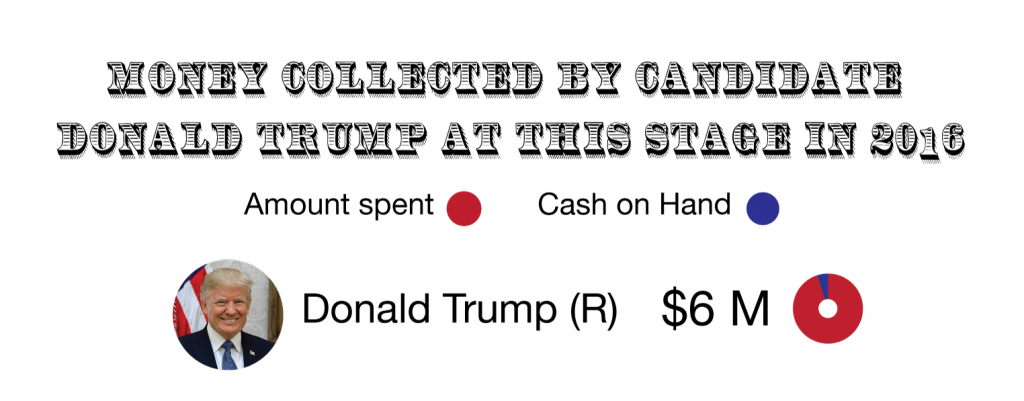
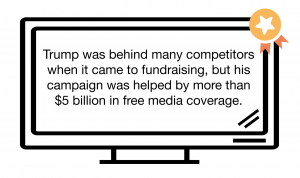
It’s clear that far more money is being spent on the 2020 Democratic primary than was shelled out by all candidates combined in 2016. It is nevertheless impressive that Trump managed to win the Republican nomination and then the general election when he had raised only $6 million by January 2016.
A data point that puts all of the other information in perspective is the following: the estimated total spending in political advertising for the complete 2020 election campaign is projected to be $10 billion, an increase of 59 percent more than all political advertising spending of 2016. With the unprecedented spending so far, it’s not hard to imagine the final tally will be even higher. But we won’t know until after all the ballots are cast November 3.
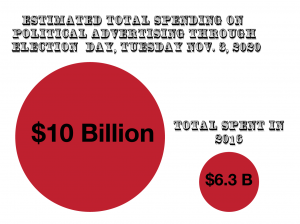
Finally, it should be noted that money isn’t everything in politics. According to the New York Times, Hillary Clinton and her allies raised about $1 billion in 2016. Trump and groups working on his behalf garnered only about $600 million.
Correction: Due to an editing error, an earlier version of this story had a wrong date for the Nevada caucuses. They will be held Saturday, February 22.
































